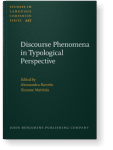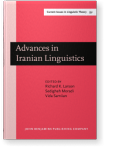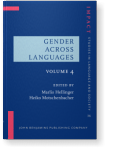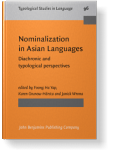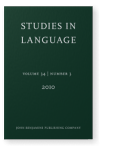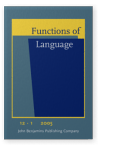Geoffrey L.J. Haig
List of John Benjamins publications for which Geoffrey L.J. Haig plays a role.
2025 Between VO and OV in Arabic and Aramaic: A corpus-based typology with implications for word-order shifts Studies in Language: Online-First Articles | Article
Drawing on a corpus-based typology of 24 spoken dialects of contemporary Arabic and Aramaic, we explore relevant microvariation along the VO-OV spectrum in Central Semitic, which holds implications for the still understudied VO-to-OV shift. While the literature emphasizes that this type of… read more
2023 Chapter 9. Are referent introductions sensitive to forward planning in discourse? Evidence from Multi-CAST Discourse Phenomena in Typological Perspective, Barotto, Alessandra and Simone Mattiola (eds.), pp. 231–268 | Chapter
It has been argued that speakers employ morphosyntactic structures such as presentationals and left-dislocations (Lambrecht 1994) to establish new entities in discourse due to considerations of referent accessibility vis-à-vis event processing (Du Bois 1987; Chafe 1987). We here investigate… read more
2020 Chapter 5. The pronoun-to-agreement cycle in Iranian: Subjects do, objects don’t Advances in Iranian Linguistics, Larson, Richard K., Sedigheh Moradi and Vida Samiian (eds.), pp. 85–106 | Chapter
There is a broad consensus within linguistics that personal pronouns may undergo grammaticalization to yield person agreement morphology. Furthermore, it is widely assumed that similar processes apply to both subject and object pronouns. In this chapter I consider the fate of a phonologically… read more
2015 Gender in Kurdish: Structural and socio-cultural dimensions Gender Across Languages: Volume 4, Hellinger, Marlis and Heiko Motschenbacher (eds.), pp. 247–276 | Article
2011 Linker, relativizer, nominalizer, tense-particle: On the Ezafe in West Iranian Nominalization in Asian Languages: Diachronic and typological perspectives, Yap, Foong Ha, Karen Grunow-Hårsta and Janick Wrona (eds.), pp. 363–390 | Article
The Ezafe particle is well known from recent work on Persian syntax, but its historical origins and developmental pathways have received less attention. This chapter redresses the balance by considering the Ezafe in a related West Iranian language, Northern Kurdish. In Northern Kurdish, the Ezafe… read more
2010 Review of Donohue & Wichmann (2008): The typology of semantic alignment Studies in Language 34:3, pp. 689–698 | Review
2005 Review of Andersen (2003): Language Contacts in Prehistory: Studies in linguistic stratigraphy Diachronica 22:1, pp. 177–184 | Review
